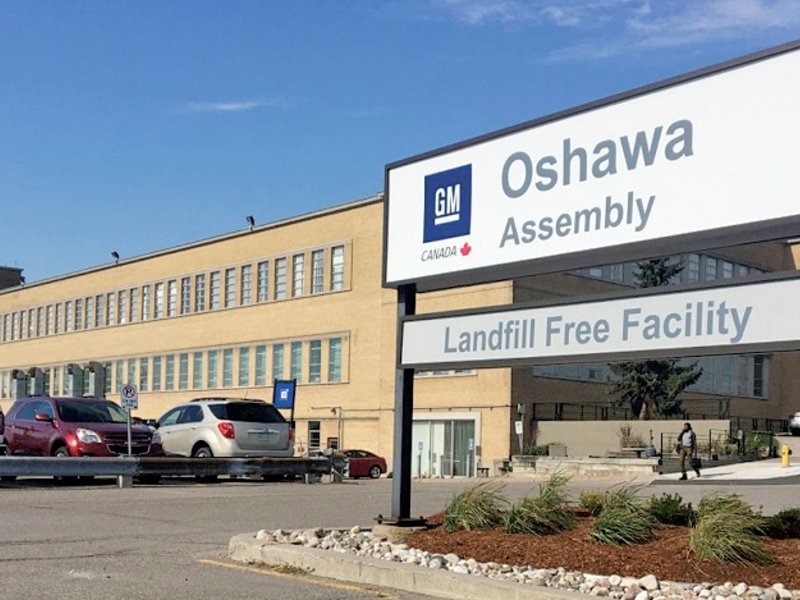
The enduring popularity of pickups and General Motors’ significant inventory issues appeared to play large roles in the company’s surprise decision to restart vehicle production at its Oshawa, Ontario, assembly plant.
“The bottom line is they need volume, and Oshawa is sitting there,” said Jerry Dias, president of the Canadian union Unifor.
GM Canada said Thursday that it would “immediately” invest up to 1.3 billion Canadian dollars ($994 million) in the Oshawa plant to build light-duty and heavy-duty Chevrolet Silverado and GMC Sierra pickups starting in 2022.
The plans are contingent on ratification of a new three-year contract with the union. Virtual ratification voting is set to begin at 11 a.m. Eastern time Sunday, with the results likely to be released Monday.
The pickup assembly plans are a major victory for union leadership, which fought hard against closing the plant in 2018 and 2019 by organizing a blockade of GM Canada headquarters and launching a cross-border media campaign, among other tactics. The plant, home to about 20,000 workers in the 1980s, now employs about 300 people producing aftermarket parts and personal protective equipment. It previously employed 2,600.
Sam Fiorani, vice president of global vehicle forecasting for AutoForecast Solutions, said Oshawa is a “great place for GM to provide overflow production” of its popular pickups. The Silverado and Sierra are currently built at three plants in Michigan, Indiana and Mexico, which have largely been running on overtime since the pickups’ 2019 model year redesign, he said.
The investment would help the company institute a “fast response to strong customer demand” for the pickups, GM Canada President Scott Bell said in a statement.
Indeed, sales of the Silverado and Sierra were higher through the first three quarters of 2020 than they were in 2019, despite a pandemic that sent industry sales plummeting earlier this year. GM sold 418,144 Silverados in the U.S. in the first nine months of 2020, up 0.6 percent from a year earlier, according to the Automotive News Data Center. U.S. Sierra sales through that point rose 6.8 percent from a year earlier.
The pickups are two of GM’s three highest-selling vehicles in the U.S., as well as two of its most profitable. But the company has struggled with pickup and SUV inventory since the production shutdown this spring, putting a strain on its third-quarter sales.
According to Morgan Stanley, GM’s days’ supply of vehicles on hand at the end of October stood at 52, down from 83 days a year earlier.
“Rebuilding truck inventories is of prime importance because that’s where profits come from,” said Kristin Dziczek, vice president of industry, labor and economics at the Center for Automotive Research in Ann Arbor, Mich.
Fiorani said GM could see an opportunity to increase market share against its competitors in the pickup segment.
“GM has a history of attempting to increase market share at moments like this where the rest of the competition is right-sizing or trying to recover from a down market,” he said.
Unifor’s Dias said heavy-duty pickup production would begin on one shift in January 2022, with a second shift added that March. In May, light-duty vehicles would be added to the assembly lines. GM Canada said it expected to hire 1,400 to 1,700 hourly workers for pickup production.
Dias said there was a “very strong possibility” of a third shift being introduced in July 2022, which would boost total employment at the plant to about 2,500. Fiorani was skeptical of that, saying a third shift could reduce non-overtime production at one of the U.S. pickup plants.
“It would seem like they would have to take it out of an existing shift in the U.S., and the UAW would not be happy about that,” he said.